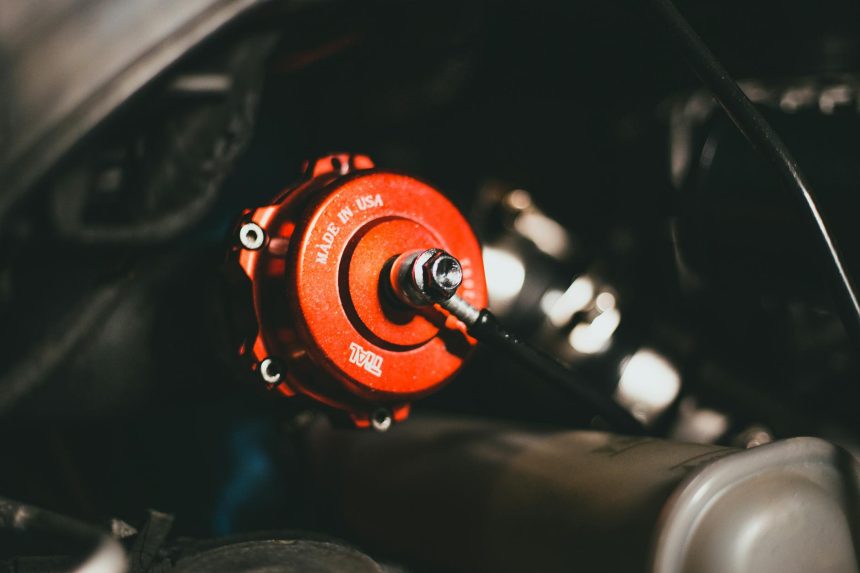co2-transportation-industry
CO2 Transportation Industry: 5 Decades of Innovation & Growth
The global energy landscape is undergoing a profound transformation, driven by the urgent need for sustainable practices and reduced carbon emissions. At the heart of this evolution lies the **CO2 transportation industry**, a critical component in the broader effort to manage and mitigate industrial carbon output. For regions like Louisiana, this isn’t a new concept; the infrastructure and expertise for moving and injecting carbon dioxide have been developing for nearly five decades, establishing a robust foundation for future environmental and economic initiatives.
This article will delve into the past, present, and future of this vital sector, exploring its technological advancements, economic impacts, and pivotal role in forging a more sustainable energy future. Understanding the complexities of CO2 transport is essential for anyone interested in climate action, energy security, and industrial innovation.
Introduction to the CO2 Transportation Industry
The challenge of climate change demands innovative solutions, and managing industrial CO2 emissions is paramount. The **CO2 transportation industry** focuses on moving captured carbon dioxide from its source, such as power plants or industrial facilities, to secure storage sites or for utilization.
What is CO2 Transportation and Why is it Crucial?
CO2 transportation primarily involves the safe and efficient movement of large volumes of carbon dioxide. This can be achieved through pipelines, ships, rail, or trucks, with pipelines being the most common and cost-effective method for continuous, large-scale transport. Its crucial role stems from the need to prevent CO2 from entering the atmosphere, thereby reducing greenhouse gas concentrations.
Effective transportation networks are the linchpin for successful carbon capture, utilization, and storage (CCUS) projects, enabling industries to decarbonize while maintaining economic output. Without reliable transport, even the most advanced capture technologies would be ineffective in achieving their environmental goals.
The Role of Carbon Capture in Modern Energy
Carbon capture technologies are designed to isolate CO2 from industrial emissions. Once captured, this CO2 needs to be transported to its final destination, which could be a geological storage site deep underground or a facility where it can be repurposed for industrial uses, such as enhanced oil recovery (EOR) or creating new products. This integrated process is vital for industries that are difficult to decarbonize through electrification alone.
The synergy between carbon capture and efficient transportation is fundamental to the energy transition, offering a pathway for heavy industries to meet stringent environmental regulations and contribute to global climate targets.
Decades of Development: The Louisiana Example
Louisiana stands as a prime example of a region with long-standing experience in industrial CO2 management. Its geological characteristics, coupled with a history of energy production, have made it a natural hub for the development of the **CO2 transportation industry**.
Historical Roots of CO2 Management
For nearly five decades, Louisiana has been at the forefront of CO2 transportation and injection, largely driven by applications in enhanced oil recovery. This history has led to the development of extensive pipeline networks and a deep understanding of subsurface injection techniques. These early applications provided invaluable experience in handling, moving, and storing CO2 safely and effectively.
This foundational knowledge is now being leveraged to address broader climate change goals, transitioning from primarily EOR applications to dedicated carbon sequestration projects. The expertise gained over decades provides a significant advantage for scaling up future CCUS initiatives.
Building a Robust Infrastructure for the Future
The established infrastructure and technical expertise in Louisiana offer a blueprint for future expansion of the CO2 transportation sector. This includes not only physical pipelines but also regulatory frameworks, skilled labor, and geological understanding. The region is actively planning and developing new projects aimed at creating large-scale carbon capture hubs.
Such developments are crucial for attracting new investments, fostering innovation, and positioning the state as a leader in sustainable industrial practices. The robust infrastructure ensures that captured CO2 can be moved efficiently and safely to storage sites, often located offshore or in deep saline aquifers.
Key Technologies and Innovations in the CO2 Transportation Industry
The efficiency and safety of moving carbon dioxide depend heavily on advanced technologies and continuous innovation. The **CO2 transportation industry** is constantly evolving to meet growing demands and stricter environmental standards.
Pipeline Networks: The Backbone of CO2 Transport
Pipelines are the most established and economical method for transporting large volumes of CO2 over long distances. These specialized pipelines are designed to handle CO2 under high pressure, often in a supercritical state, which allows for greater density and efficiency. Key innovations include:
- Advanced materials for corrosion resistance and structural integrity.
- Sophisticated monitoring systems for leak detection and pressure management.
- Optimized compression stations to maintain flow and minimize energy consumption.
The development of extensive pipeline networks is essential for connecting industrial emitters to distant geological storage sites, forming the arteries of a future carbon-neutral economy.
Advanced Injection Techniques
Once transported, CO2 must be safely and permanently injected deep underground. Advanced injection techniques ensure the long-term integrity of storage sites and prevent any leakage. This involves:
- **Site Selection:** Thorough geological surveys to identify suitable porous rock formations capped by impermeable layers.
- **Well Design:** Engineering specialized injection wells capable of withstanding high pressures and CO2 properties.
- **Pressure Management:** Careful control of injection rates and pressures to avoid fracturing the caprock or inducing seismic activity.
These techniques are critical for ensuring the environmental safety and efficacy of carbon sequestration projects.
Monitoring and Safety Protocols
Safety and environmental protection are paramount in the **CO2 transportation industry**. Rigorous monitoring and safety protocols are implemented at every stage, from capture to injection. This includes:
- Real-time sensor networks along pipelines to detect any anomalies.
- Continuous monitoring of injection well performance and subsurface CO2 plume movement.
- Comprehensive risk assessments and emergency response plans.
- Adherence to international safety standards and best practices.
These measures ensure that CO2 transport and storage operations are conducted with the highest levels of safety and environmental responsibility.
Economic and Environmental Impact
The growth of the **CO2 transportation industry** brings significant economic benefits and plays a crucial role in global environmental efforts.
Driving Industrial Growth and Job Creation
Investment in CCUS infrastructure, including CO2 transportation networks, stimulates economic growth by creating new jobs across various sectors. This includes engineering, construction, operations, maintenance, and geological services. Regions with established energy sectors, like Louisiana, can leverage existing expertise and workforce to transition into this new industrial frontier.
Furthermore, by enabling industries to reduce their carbon footprint, the CO2 transportation sector helps preserve existing jobs in heavy industries that might otherwise face closure due to environmental pressures. It fosters a competitive advantage for regions that embrace sustainable industrial practices.
Mitigating Climate Change: A Core Objective
The primary environmental benefit of the CO2 transportation industry is its direct contribution to climate change mitigation. By enabling the permanent removal of CO2 from the atmosphere or preventing its release from industrial sources, it helps reduce the concentration of greenhouse gases. This is particularly important for hard-to-abate sectors such as cement, steel, and chemical production.
Effective CO2 transport and storage are indispensable tools in achieving national and international decarbonization targets, supporting the transition to a low-carbon global economy.
Policy and Regulatory Frameworks
Supportive policy and robust regulatory frameworks are essential for the expansion of the **CO2 transportation industry**. Governments play a vital role in providing incentives, setting clear guidelines, and ensuring public confidence in CCUS projects. Examples include:
For more information on federal initiatives, visit the U.S. Department of Energy Office of Fossil Energy and Carbon Management.
These frameworks help de-risk investments, standardize operations, and ensure environmental integrity.
The Future of the CO2 Transportation Industry
The trajectory for the **CO2 transportation industry** is one of significant growth and innovation, driven by increasing climate ambitions and technological advancements.
Emerging Trends and Global Expansion
Future trends indicate a shift towards larger, interconnected CO2 pipeline networks, often spanning international borders, to serve industrial clusters. There’s also growing interest in alternative transport methods, such as shipping, for regions without direct pipeline access to storage sites. Furthermore, the development of CO2 utilization pathways will create new demands for transport to facilities converting CO2 into valuable products.
Globally, more countries are recognizing the necessity of CCUS, leading to a proliferation of projects and the establishment of new CO2 transport infrastructure in diverse geographical contexts. This expansion is critical for achieving net-zero emissions targets worldwide.
Addressing Challenges and Opportunities
While the future is promising, the industry faces challenges, including high initial capital costs, public perception, and the need for greater regulatory harmonization. However, these challenges also present opportunities for technological breakthroughs, cost reductions through economies of scale, and enhanced public engagement strategies.
The continuous evolution of the **CO2 transportation industry** offers a pathway to not only mitigate climate change but also to foster economic resilience and innovation in energy-intensive sectors. For detailed environmental guidelines, refer to the Environmental Protection Agency on Carbon Capture and Sequestration.
Conclusion: Pioneering a Sustainable Energy Future
The **CO2 transportation industry** is not merely a logistical necessity; it’s a cornerstone of modern climate action and sustainable industrial development. With a rich history of innovation, particularly evident in regions like Louisiana, this sector is poised for significant expansion.
By enabling the safe and efficient movement of carbon dioxide, it underpins the success of carbon capture and storage initiatives, drives economic growth, and plays an indispensable role in mitigating greenhouse gas emissions. As global efforts to combat climate change intensify, the importance of robust CO2 transportation infrastructure will only continue to grow.
Ready to delve deeper into the future of sustainable energy? Explore our comprehensive resources on carbon management and innovative industrial solutions.
Featured image provided by Pexels — photo by Erik Mclean









